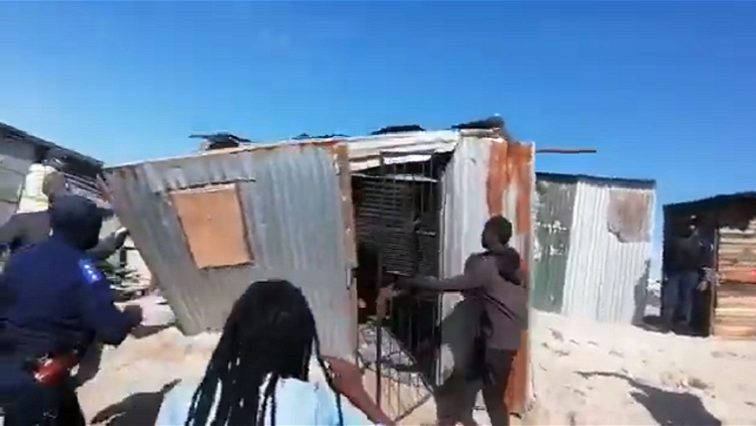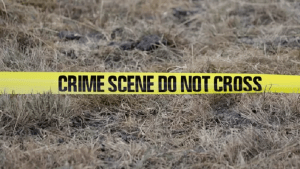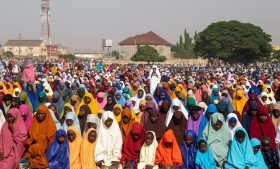A few weeks ago, news headlines in South Africa bandied about images of one Bulelani Qholani who was forcefully removed from his shack as part of the City of Cape Town’s plan to evict residents who allegedly occupied land illegally. Qholani has since received public sympathy for finding himself under a compromising situation of indignity.
This particular image of a black naked man (Qholani) put the City of Cape Town under heavy scrutiny with much reference on the dignity of the man especially when he was forced out of his house in the full glare of the public as well as his daughter. Section 10 of South Africa’s Constitution places emphasis and provision on the right to dignity. This principle is one that carries aspirations of South Africans not only in how indignity may occur through bodily integrity but “dignity” as a much deeper link to the overall human life in relation to the total quality and respect for the human being.
Human rights ought to afford the basic necessities in the form of entitlements on housing, sanitation amongst other things. This type of explanation forces one to recall the incident that took place in October 2016 at Wits University when female students were body shamed, sexualised, condemned and vilified for having a nude protest as the means of intensifying their struggles during the fees must fall protests.
It is perhaps important to point out that the fees must fall protests were about the indignity of poverty which dictates that historically disadvantaged South Africans would be unable to afford a decent education. The outcome of poverty leads to all forms of protests from which all relevant institutions are forced to pay attention to the plight of South Africans. The fees must fall protests bears a historical trait whereby the former apartheid regime’s efforts in giving the bare minimum to black African students had recently haunted black students.
So, the continuous effects of this denote a perpetual galvanisation of the masses towards social justice and advocacy on human rights. History often abounds a myriad of instances from which African women sought to protest in nudity in order to convey a message, thus using nudity as a political tool as opposed to sexual objectification. Some of these protests include but not limited to forced removal protests of the 1960s until recent decades.
Given this background, a worrisome factor comes into play when nude protesters of fees must fall were vilified amidst their conviction that using their bodily integrity will heed the attention of those who care to pay attention. The issue here is the question on how one should stretch out their dignity in order to highlight a pervasive indignity that forms part of the daily reality of any South African. It is in this instance that the “body” is thus used as an instrument for fighting injustices that arise as a result of the state of human rights in South Africa.
In contrast to the Qholani matter, female students (Fees must fall) faced a public backlash as they were fighting for fair access to higher education – they were body shamed, humiliated and rebuked for their stance. In essence, the focus shifted from what the initial grief was about, and the bodies of these women became the primary topic and possibly ignoring the actual plight behind the injustices that they were faced with. With regards to the Qholani matter, the City of Cape Town faced reprisal for its actions. Qholani was repeatedly assaulted by the police in the glare of the media and his community.
The injustice of poor access to housing as it is the case in the Qholani matter falls squarely in the corpus of first generation of human rights and so does access to education. Both these human rights are arguably indivisible even though in their state individual state they may also be inalienable. They are inalienable because they are rooted within the quality of the human condition and human development. The Qholani incident as well as fees must fall nude protest of 2016, provide us with an opportunity to reflect on the manner in which the integrity of the body can be violated when faced with issues of human indignity such as a lack of water and sanitation, housing , access to education, amongst others. Any form of rebuke that ought to have been meted out during the fees must fall nude protests should have heeded an acknowledgement of the poor state of access to higher education.
The rebuke and public outrage should rather be inferred as the means to question the extent to which poverty and inequalities force human beings to use their bodies as an instrument of advocacy. So in essence, the bodies of women protesters at Wits University which happened four years ago were never meant for pleasurable public display but the bodies of these women were meant to symbolise the indignity of being poor, and unable to access education as part of human development and other accompanying social conditions. Indignity as a perpetuation of poverty resides in the bodies and minds of those who are thrust into situations of poverty and more often without a choice.
The fees must fall protests of October 2016 were only but part of the broader series of protests of different kinds which had happened during that time period. In as much as the nude protestors in this case faced public outrage, it arguably became part of the debate on the means of protest in contemporary socio-political context of South Africa, and it was these protests that made significant contribution to the review of government policy on strengthening access to higher education in South Africa.
The Qholani matter on the other hand forced institutions such as the Human Rights Commission of South Africa to take the City of Cape Town to court for the manner in which police handled Qholani. Nudity in both contexts was able to raise the attention of those in authority to question the state of human dignity in the context of human rights; inclusive of the right to access to education housing and other entitlements. In both the case of fees must fall nude protestors as well as the violent eviction of Qholani point out images of indignity in the context of the human condition. None of these incidents should reserve public sympathy more than the other because at the core of the imagery of nakedness lies factors of indignity as a result of poor access to the needs of human development.
By: Mofihli Teleki and Sixolile Ngcobo






